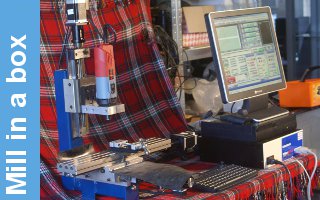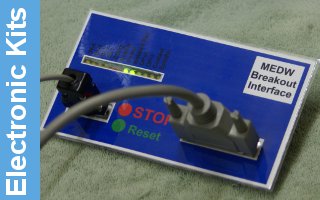HRP Brazing of Boiler
BRAZING OF BOILERS
Boilers, probably more than other components, will need the correct equipment to ensure success in building. With the large copper boilers, 2" and 3" scale and upwards, it will be necessary to use oxy-acetelyne for the main brazing heat, with the addition of a secondary heat of perhaps Calor Gas or a large paraffin blow lamp. This secondary heat is often required only initially, but is never the less important. The main essentials for correct and deep penetrating brazing are that: (1) the boiler should be hot enough and thus be pre-heated, and (2) a large enough jet or tip must be used so that the boiler will be hot all around the immediate area of brazing. A No. 35 jet is an ideal choice for this size of engine boiler. If too small a jet is used, all that will happen is that the builder will bring the jet nearer the work in an attempt to raise the metal to brazing temperature, and the ultimate result will be super-heating at the surface, and probably burning, which may result in a hole. If at this point the brazing rod is introduced, it will also be burnt and therefore will result in globules of oxydised rod adhering to the surface; also the immediate area will be oxydised and there will be almost no penetration at all. Whereas if a nice large jet is used, the whole area will be up to brazing temperature, and if the rod is only introduced to the work when this temperature is reached, there will be no burning what-so-ever, with maximum flow and deep powerful penetration. The rod should melt and flow away immediately it touches the boiler surface, with no tendancy to stick.
When brazing seams, or in fact any portion of your boiler, always keep the flame on the move, e.g: when sealing stay ends, continually move the flame in a circular path around each stay and then move on, so as to heat up the adjacent stays as well; returning to the first stay, the Sifcupron will flow like water. This procedure ensures general heat, and that the surrounding area is of the same temperature as the stay which you are actually brazing, therefore keeping burning to a minimum. This policy is particularly essential to follow when brazing up the tube ends inside the firebox; the flame should be kept continually on the move, never stopping, since this can easily result in a burnt tube. Once the whole of the tubeplate and tube ends are hot it will be seen that on touching the copper with the Sifcupron the rod will melt and run freely, and at this stage it can be introduced to all of the tube ends and effect a good permanent seal very quickly and minimize the risk of any burning. The same procedure applies to the front tubeplate, but this end is not so critical since your flame is not in such a confined space.
Builders often experience difficulty in obtaining adequate penetration when brazing seams, taking the throatplate seam to the outer wrapper as an example, the flame should be played more against the outer wrapper than the throat plate, i.e.: against the overlap of the seam; if the work is truly hot no radius will occur as the brazing material will flow immediately down between the plates. Once penetration has been achieved the flame can be taken from the side and used to make a neat radius to finish the job. It will be found that with the flame removed from the overlap, that a radius will now form and will not flow down through the seam.








